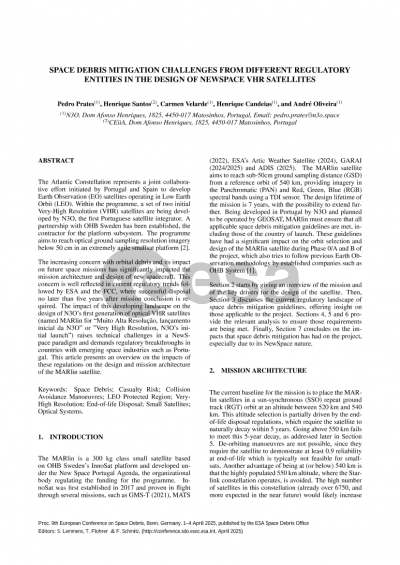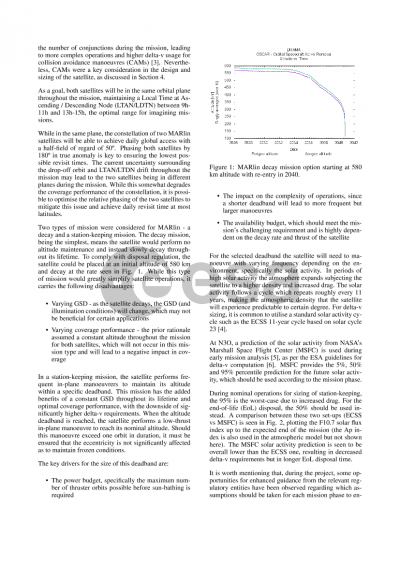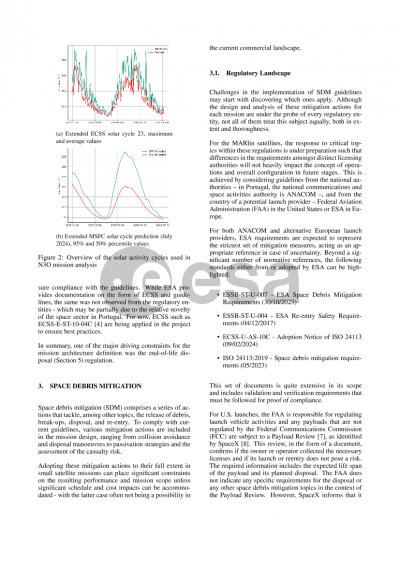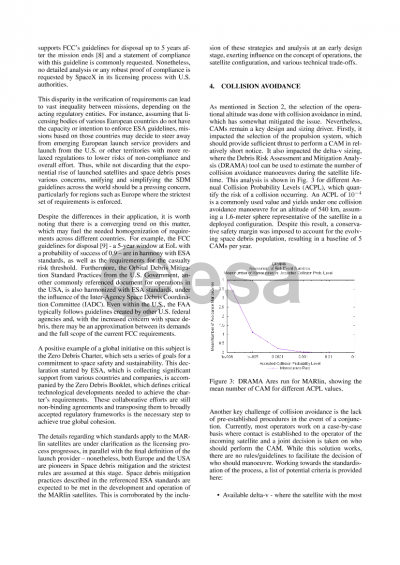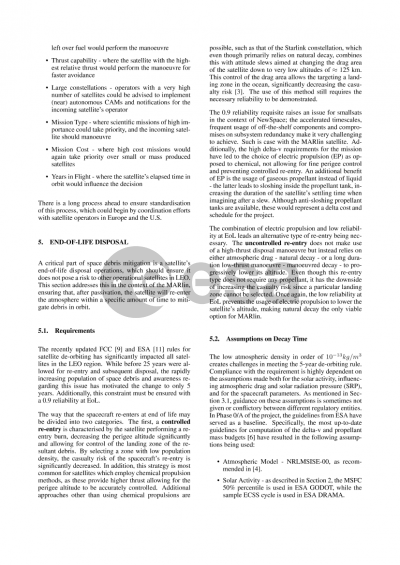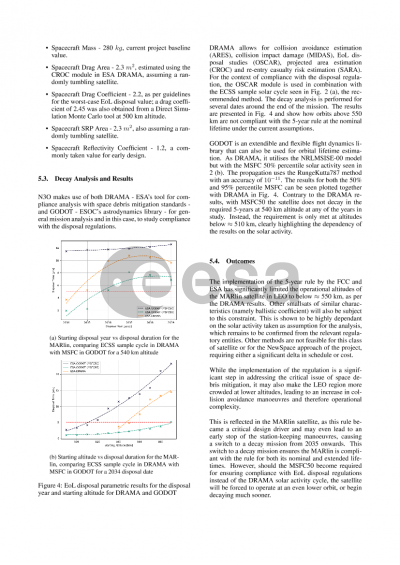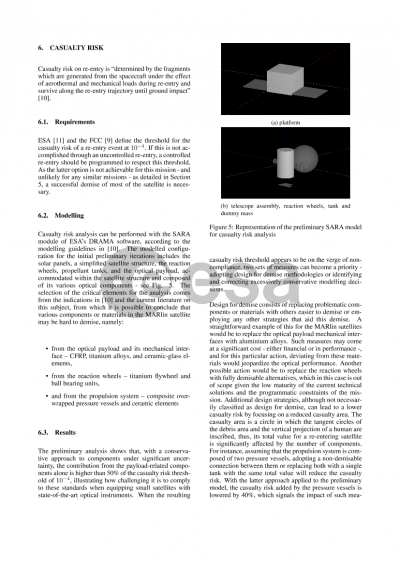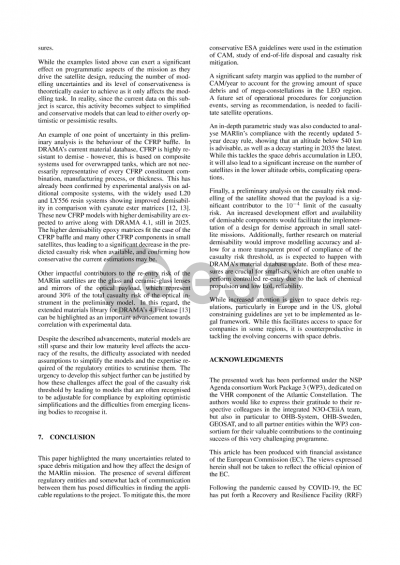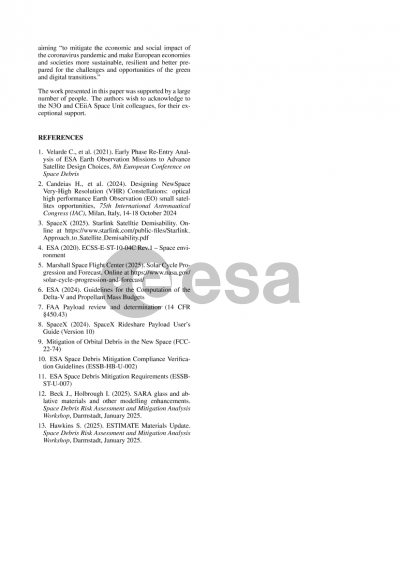Document details

Abstract
The Atlantic Constellation represents a joint collaborative effort initiated by Portugal and Spain to develop Earth Observation (EO) satellites operating in Low Earth Orbit (LEO). Within the programme, a set of two Very-High Resolution (VHR) satellites are being developed by N3O, the first Portuguese satellite integrator. A partnership with OHB Sweden has been stablished, the contractor for the platform subsystem. The programme aims to reach optical ground sampling resolution imagery below 50 cm in an extremely agile small sat platform.
The increasing concern with orbital debris and its impact on future space missions has significantly impacted the mission architecture and design of new spacecraft. This concern is well reflected in current regulatory trends followed by ESA and the FCC, where successful disposal no later than five years after mission conclusion is highlighted. The impact of this developing landscape on the design of N3O’s first generation of optical VHR satellites raises technical challenges in a New Space paradigm and demands regulatory breakthroughs in countries with emerging space industries such as Portugal.
The constraints created by regulatory frameworks for space debris mitigation are faced with tension from the growing competitiveness of the private sector due to how they affect the development costs for the needed performance. The VHR satellite development is significantly impacted by the influence of disposal and collision avoidance manoeuvres in the mission architecture (e.g., operational orbit, required delta-v, casualty risk). Small satellite systems are frequently noncompliant with a reliability of 0.9 by their end of life, as commonly required for altitude-lowering disposal manoeuvres leading to rely solely on natural decay in their disposal plan, which in turn limits their operational orbital altitude in the LEO protected region.
This article presents a comprehensive study on how the VHR satellite complies with current space debris regulations. The described iterative design process makes use of both ESA and in-house tools to establish a preliminary operational orbit, mission architecture and satellite configuration. By shedding light on this process and the challenges felt by New Space players on how to adhere to space debris mitigation guidelines, a thorough discussion regarding needed technological and regulatory improvements is presented.
Preview
